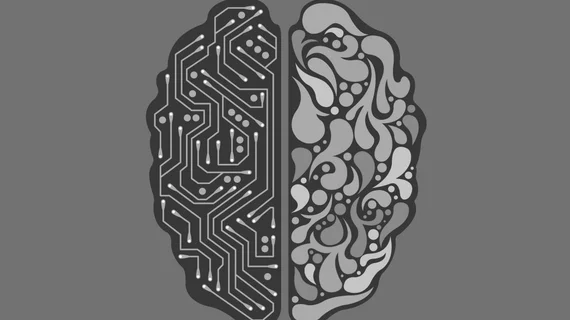A machine learning tool developed by researchers at Imperial College London could assess the severity of leukoaraiosis in stroke patients with greater efficiency and accuracy than the typical emergency room CT, a study published this week in Radiology states.
Leukoaraiosis, a small vessel disease that’s indicated by white matter lesions and lacunae infarcts, is a valuable tool for assessing bleeding damage and other symptoms in stroke patients, senior author Paul Bentley, PhD, said, but it’s notoriously difficult to identify.
“Although identifying on CT which brains are affected by extensive white matter lesions is fairly obvious, knowing exactly where to draw the boundaries and whether someone should be graded moderate or severe is highly variable,” Bentley, a clinical senior lecturer at Imperial’s Centre for Restorative Neurosciences, told the Radiological Society of North America.
He said MRI is heralded as the best quantifier of white matter damages in these cases—namely fluid-attenuated inversion recovery MR—but CT is quicker, cheaper and more readily available in emergency situations. Bentley and a team of Imperial researchers worked to develop a machine learning algorithm that could be applied to CT for better results, without sacrificing time or quality.
Using a multicenter cohort of acute ischemic stroke patients and 1,000 CT images, the researchers chose 90 representative image sections from 50 patients. The sections, all of which showed moderate to severe white matter lesions as traced manually by neuroradiologists or stroke physicians with at least five years’ experience, were sampled and labeled based on whether or not their central pixel was labeled as white matter. Millions of repetitions led to a general classifier.
Bentley et al. then modified the classifier with a probabilistic atlas of white matter lesions based on 227 FLAIR MRIs and validated it using a set of stroke experts.
“We compared both the overall volume and spatial overlap of white matter lesion areas segmented by our method with those of three experts who had meticulously drawn over the same set of images,” Bentley told the RSNA. “They had been asked to draw their perceived boundaries of all cerebral white matter lesions.”
He said the tool was successful in assessing CT cerebral white matter lesions, reaching an accuracy similar to that of expert delineation and cutting average tracing time from 7.9 minutes to 109 seconds. Even when other brain lesions, like atrophy, acute ischemia or old infarcts, were present, the machine learning method persisted.
“We have already added this algorithm as a tool in our hospital’s CT PACS,” Bentley said. “The importance of being able to segment lesions on CT means that parametric outputs can be provided, reliably and rapidly, for images generated in everyday hospital practice.”

